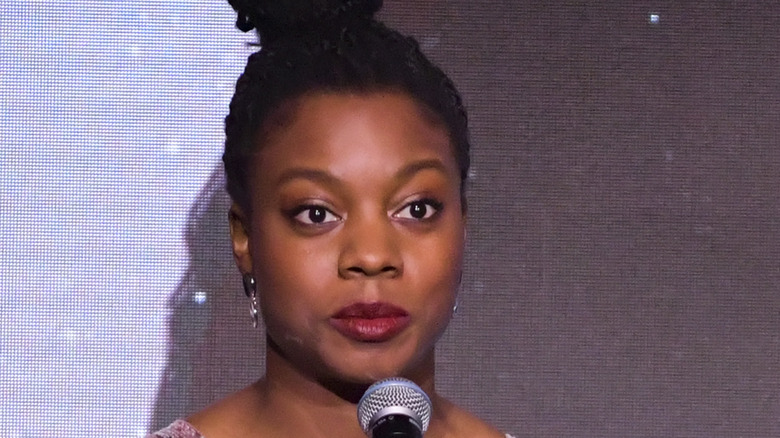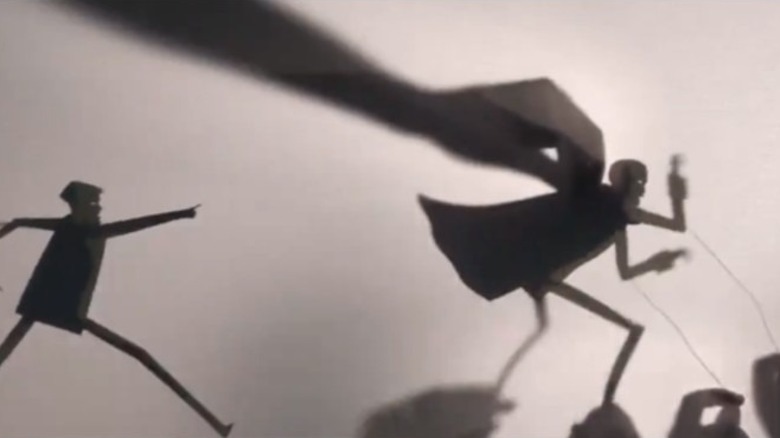The Surprising Reason Director Nia DaCosta Used Shadow Puppetry In Candyman
Nearly 30 years after the debut of the original "Candyman," Universal Pictures is ready to revisit the supernatural slasher. Directed by Nia DaCosta and written by Jordan Peele, the new "Candyman," which hits theaters on August 27, serves as a sequel to the original, despite being the fourth film in the franchise.
The new installment picks up the story some 28 years after the original, with a now-adult Anthony McCoy (the infant who barely survived the events of the first film) and his girlfriend moving into a new Cabrini building — only to discover the horrors of the past are once again stalking the world. Given the large time-jump and the need to remind new viewers of past events, director Nia DaCosta opted to use shadow puppets as opposed to more traditional means of relating past events. At a press conference Looper attended for "Candyman," we asked DaCosta why she went with the puppets.
DaCosta uses an ancient art to tell Candyman's past
According to DaCosta, both she and Jordan Peele got together early in the film's production to discuss how to address elements from the first film, and the lore it established, that were essential to their new story. Neither director nor writer were keen on using the traditional flashback sequence common to most films. Another option the creative pair quickly vetoed was using clips from the first "Candyman." As DaCosta said, they "wanted this movie to stand on its own."
With the two obvious techniques out of the running, Peele suggested the use of shadow puppetry. Shadow puppetry, which traces its origins to ancient China, involves manipulating flat, cut-out figures and shapes so that their silhouettes "perform" a scene. The two then worked with Manual Cinema, a production company in Chicago, to create and design the unique aesthetic. "From there," she said, "it just sort of became really less about flashbacks and more about how we depict people telling these stories, how we depict these legends, and also we depict these moments of violence throughout history." Audiences saw the first reveal of the shadow puppetry in a short film/teaser trailer for the film.

